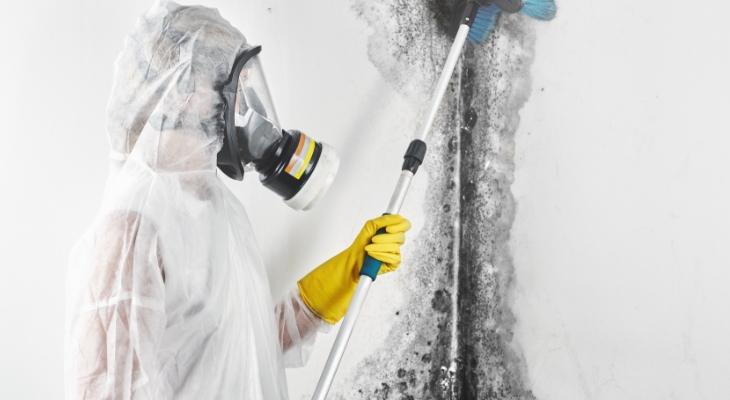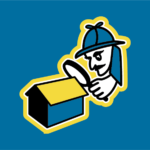
What Is Mold?
Mold is a type of fungus that thrives on moisture and can grow in both indoor and outdoor environments. Microscopic mold spores are constantly floating and circulating throughout the air. When these spores land on a damp or moist surface, mold may begin to sprout, grow, and reproduce into mold colonies. These mold colonies digest different types of materials to survive and thrive including things like food, paper, plastics, plaster, cardboard, ceramics, masonry, ceiling tiles, wood, plants, and fabrics. There are thousands of different types of molds, and most are harmless to people. However, some molds are toxic and may cause serious health problems.
Common Mold Types
The three most common types of molds include the following:
Mold may appear in a variety of colors or hues including:
Aspergillus is a mold that is usually found on food products and air-conditioning systems.
Cladosporium is a mold that may be found growing on painted surfaces, toilets, and air ducts.
Black mold is known to produce certain toxins, known as mycotoxins, that can lead to health problems. As its name suggests, toxic black mold can be identified due to the color, which will be black or a blackish-green color.
Susceptible Areas and Signs
Mold can grow anywhere there is moisture or water. The most vulnerable areas of a home or building where mold may grow include:
Bathrooms
Obviously, bathrooms have an abundance of water sources making these areas inviting for the growth of mold. Common places for mold to appear in a bathroom include the shower, tub, toilet, sink, and shower curtain.
Basements
Basements are places within a home or building that usually have poor ventilation, may see water infiltration, and contain broken pipes, meaning moisture is prevalent.
Crawl Spaces
Like basements, crawl spaces can become areas where mold is found. Water may drain and accumulate in the crawl space, creating an environment for mold to grow.
Attics
Attics can be areas where mold grows on different types of building materials. If ventilation systems are positioned in attics, mold may enter these systems and spread throughout the home building.
Kitchens
The kitchen is a place where mold has numerous chances to grow including water in, under, and surrounding the sink as well as food products left on countertops or stored in cabinets.
Laundry Rooms
Laundry rooms are areas where the humidity and temperature is high, allowing mold to grow in or on washing machines, dryers, sinks, and clothing.
HVAC or Air Conditioning Systems
HVAC or air conditioners may cause condensation creating pooling water inside or around the system and inviting mold growth.
Vents and Ventilation Systems
Humid air running through the ventilation system of a home or building may create a welcoming environment for mold growth. Additionally, the system may distribute mold spores throughout the entire structure.
Windows
Windows, and areas surrounding windows, may collect moisture and invite mold growth. Often, mold finds its way into the structural lumber and building materials around the window, causing damage.
Fireplaces and Chimneys
When not being used, fireplaces and chimneys are damp and dark places, making them welcoming locations for mold.
Garage and Storage
Garages and storage areas can be areas susceptible to moisture and poor ventilation, which is attractive for mold growth.
Signs and Indicators
A mold problem can usually be identified either by visual or olfactory senses. Because mold growth is often hidden, the first indication may likely be a noticeable musty odor. When that odor is detected without visual evidence, it’s important to check under flooring, inside ductwork, in between bathroom tiles, behind walls, and in moisture-prone areas.
Removing and Remediating
Mold is not something that should be ignored. When it is discovered, it should be removed and remediated, especially toxic black mold, which can cause serious health problems. During the removal and remediation process, spores of the toxic black mold need to be contained to prevent and limit their spread throughout the home or building. Due to the complexities and dangers associated with properly removing and remediating black mold, a professional is recommended.
Sherlock Homes Property Services is a professional mold removal and remediation company that offers the technical knowledge, expertise, and necessary equipment to safely remove and remediate mold from homes and buildings. We’ve been providing mold removal and remediation services to customers throughout northwest Ohio, northeast Indiana, and southeast Michigan for over 17 years.

“A careful inspection is very important! It could be the difference in saving you a whole lot of money and headache in the end!”
Chad | Sherlock Homes Ltd.
Ready to setup a FREE Estimate?
Residential and commercial customers count on us to identify and remove mold and restore healthy living and working environments. Contact us today to discuss how we can help. Please call us at 419-889-8913 or send us a message here from our website.
Our Service Area
We test and remove mold from homes and buildings located throughout NW Ohio, NE Indiana, and SE Michigan including, but not limited to the following towns, villages, cities, and rural areas:
- Findlay, Ohio
- Tiffin, Ohio
- Fostoria, Ohio
- Fremont, Ohio
- Bowling Green, Ohio
- Toledo, Ohio
- Defiance, Ohio
- Bryan, Ohio
- Napoleon, Ohio
- Fort Wayne, Indiana
- New Haven, Indiana
- Angola, Indiana
- Adrian, Michigan
- Ann Arbor, Michigan
- Jackson, Michigan
- Detroit, Michigan
